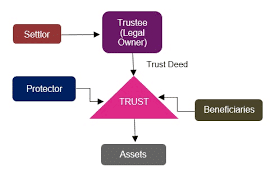Your retirement plan establishes your annual contribution limit, tax treatment, withdrawal terms, permitted investments, and fee structure. Tax benefits offered by retirement plans encourage you to invest for retirement. Types of retirement plans differ in the type of tax benefit they offer, as well as in contribution thresholds and withdrawal guidelines. Retirement plans can be tailored for employees, business owners, or self-employed individuals; some are open to everyone. We all know that saving for retirement is a good idea. Different types of retirement plan challenges include that it can be difficult to understand the many retirement plan options, especially given that some of their names—like 401(k) and SEP IRA—are unclear.
Types of Retirement Plans
The days of workers relying on Social Security and an employee pension plan to cover their expenses in their retirement years are long gone. Pensions are already uncommon, and the future viability of Social Security is not guaranteed. Uncle Sam wants you to save for retirement and is providing tax benefits on retirement accounts because of this. Here’s how to locate the top retirement savings options for you. In this definitive guide, we will walk you through the various types of retirement plans that are suitable for utilization. The following significant differences between these retirement plans stand out above all others:
Read also: SELF-EMPLOYED RETIREMENT PLANS: Best 2023 Picks, Comparisons & Reviews
- Tax advantages: Some plans provide tax advantages when you contribute money, while others do so when you take money.
- Contribution caps: The annual amount you are permitted to save. When you may withdraw money from the plan without incurring penalties? What about non-compliant withdrawal penalties? They are major contributing factors.
#1. 401(K): The ‘Standard’ Employee Retirement Plan
A qualifying profit-sharing plan’s 401(k) element enables employees to set aside a percentage of their salaries for personal accounts. Voluntary salary deferrals are not considered taxable income for the employee (except for designated Roth deferrals). Employers may make deposits into their employees’ accounts. At retirement, disbursements, including earnings, are taxable as income (except for qualified distributions of designated Roth accounts).
Two primary categories of employer-sponsored retirement programs known are
1. Defined benefit plans: Pension plans may have come up in conversation. Several businesses used to guarantee employees a specific retirement benefit in the past. The pension plan invested money that the employer contributed to a single retirement pool. Today, these retirement plans are uncommon. Even yet, you can come across a company that contributes annually to a retirement plan using a similar formula but without any assurances on the benefits offered upon retirement.
2. Defined contribution plans: They are the most common type of employer retirement plan now available. These plans—like 401(k)s and 403(b)s—are created by employers so that staff members can make contributions to individual accounts within the business plan, usually through payroll deductions.
#2. SIMPLE IRAs Plan (Individual Retirement Arrangements)
One of the most popular retirement plans is the IRA. For the purpose of holding investments — including stocks, bonds, mutual funds, and cash — designated for retirement, a person can establish an IRA at a financial institution, such as a bank or brokerage business. The amount that an individual can contribute to an IRA each year is capped by the IRS, and the IRS determines how the money is taxed — or shielded from taxation — when a participant makes deposits and withdrawals, depending on the type of IRA.
Principal benefits of IRAs
- They put you behind the wheel. You select the bank or brokerage and make all investing decisions yourself, or you can employ someone to do so.
- You determine how and when you receive a tax reduction based on your eligibility, the type of IRA you select (Roth or traditional), and other factors.
- IRAs offer a significantly greater selection of investment options than those of other employee retirement plans.
A SIMPLE IRA, or Savings Incentive Match Plan for Employees’ individual retirement Accounts, is an option for small businesses with 100 or fewer employees. Employees and employers can both make contributions to the retirement plan, similar to a 401(k).
#3. Roth IRA
When you receive the tax benefits is the main distinction between a Roth IRA and a standard IRA. When you contribute to a typical IRA, you don’t pay income tax; but, you do when you withdraw the funds. In contrast, with a Roth IRA, you pay taxes on the money you contribute but can withdraw it tax-free in retirement, meaning that every dollar in your account goes directly into your pocket. Certain standards and Roth IRAs can be set up to be filled on a pre-tax (for traditional IRAs) or post-tax (for Roth IRAs) basis by payroll deduction for investors who prefer the practicality and accountability of savings plans.
#4. Profit-sharing Plans (PSPs)
A profit-sharing or stock bonus plan is a type of defined contribution plan where the employer or the plan specifies how much money will be donated each year (out of profits or otherwise). The formula in the plan specifies how much of each annual contribution should go to each participant. These retirement accounts, like SEP plans, are only intended for employer contributions; employees are not permitted to make additional optional contributions.
Businesses of any size can choose to provide profit-sharing plans, and they can do so even if their employees have access to alternative retirement account options.
#5. Employee Stock Ownership Plans (ESOPs)
Employee stock ownership plans (ESOPs) give businesses a way to give employees stock ownership benefits in lieu of financial payments. Employers might gain from this type of retirement plan by offering a hiring incentive that provides tax advantages for the business. Employees who own stock are more motivated to increase profitability since they stand to gain financially from the company’s growth.
#6. 457 Plans
401(k) plans and 457 plans are substantially similar, however only government firms and non-profit organizations normally provide these retirement funds. Additionally, since 401(k) plans are qualified retirement plans, they are subject to all ERISA reporting requirements and limitations. However, 457 plans are often not qualified plans and are not subject to the same regulations. Some state and local governments, as well as non-governmental organizations exempt from federal income tax under IRC Section 501, may qualify for the types of deferred compensation defined in IRC Section 457.
#7. Cash-balance Plans
A defined benefit plan called the Cash Balance Plan describes the benefit in ways that are more typical of a defined contribution plan. In other words, a cash balance plan expresses the benefit that is guaranteed in terms of an account balance that is specified. A participant’s account is often credited with a “pay credit” (such as 5% of his or her employer’s remuneration) and an “interest credit” each year under a conventional cash balance plan (either a fixed rate or a variable rate that is linked to an index, such as the one-year Treasury bill rate). Older individuals can significantly grow their retirement savings through cash-balance plans on a pre-tax basis.
#8. 403(b) Plan
Public schools and a few nonprofits have retirement plans known as 403(b) plans, sometimes known as tax-sheltered annuity plans, or TSAs. It resembles a 401(k) plan managed by a for-profit organization. A 403(b) plan enables employees to contribute a portion of their pay to personal accounts, just like a 401(k) plan does. Deferred compensation is often not subject to federal or state income tax until it is distributed.. A 403(b) plan might, however, also provide specific Roth accounts. While income contributed to a Roth account is now taxed, it is delivered tax-free.
Contributing to a 403(b) account has the following benefits:
Tax benefits: In general, 403(b) accounts offer the same tax benefits as 401(k) and IRA accounts. Depending on whether you select a standard or a Roth 403(b), you may be able to reduce your tax bill this year in exchange for retirement distributions that are taxed or, if you pay taxes on your contributions, retirement withdrawals that are tax-free.
Employer correlation: Just as corporations offering 401(k) plans do, employers offering 403(b) plans may offer to match some of their employees’ individual contributions. On how, when, and whether a firm would match employee contributions, each has its own set of policies. For particular information regarding your company’s matching program, speak with your HR department.
What Are the Most Common Types of Retirement Plans?
Retirement plans offer tax benefits as a motivator to save for retirement. Many retirement plan types have different restrictions regarding withdrawals, contribution caps, and when you must pay income taxes. There are plans made for employees, sole proprietors and business owners, and everyone else. Yet, due to the numerous factors in these plans, any individual may or may not be qualified for their tax advantages. For this reason, it is crucial to speak with a qualified tax counselor about your unique situation. The 6 most common types of retirement plans are:
- 401(k)
- Traditional IRA.
- Roth IRA.
- SEP IRA.
- Simple IRA and Simple 401(k)
- Solo 401(k)
What Is the Best Type of Retirement Plan?
Traditional IRAs, Roth IRAs, and joint retirement accounts are the finest retirement plans for adults. 401(k), 403(b), 457(b), and thrift savings plans are the best employer-sponsored retirement programs.
What Are the 2 Main Types of Individual Retirement Accounts?
The two main types of individual retirement plan accounts are Roth IRA and SEP IRA.
Roth IRA. Earnings and withdrawals are tax-free, but contributions made with after-tax money are not deductible.
SEP IRA. Enables a small business or self-employed person as the employer to make contributions to a traditional IRA that has been set up in the employee’s name.
What Are Retirement Plans?
Retirement planning is the process of developing a financial plan that includes saving, investing, and finally disbursing funds for one’s own support in retirement. Retirement savings have many popular investing options, including 401(k)s and individual retirement accounts, that allow them to grow their money with specific tax benefits.
What Is a Retirement Plan Example?
401(k) plans, 403(b) plans, employee stock ownership plans, and profit-sharing plans are a few examples of defined contribution plans. A Simple Employee Pension Plan (SEP) is a simple way to save for retirement.
What Are Simple Retirement Plans?
A tax-deferred retirement account known as a Savings Incentive Match Plan for Employees of Small Enterprises (SIMPLE) may be set up by companies, including self-employed people. For contributions made to a SIMPLE account, the employer is entitled to a tax deduction. Each qualifying employee’s SIMPLE IRA may receive matching or non-elective contributions from the company, and the employee may also make salary deferral contributions.
What Are the Goals of Retirement Plans?
Retirement planning is the process of deciding on strategic investment choices and income targets to meet specified financial objectives.
Why Make Retirement Plans?
To leave a lasting impression. You have put a lot of effort into providing a comfortable life for your family, maintaining a level of living, being ready for emergencies, being prepared for a longer life, achieving retirement goals, fighting inflation, leaving a legacy, and many other goals.
End part
To encourage people to save for retirement, all retirement plans offer tax benefits. Retirement plan options vary in terms of things like contribution caps, withdrawal restrictions, and when you must pay income taxes. Plans vary in their intended audience, with some catering to personnel, others to proprietorships and corporate executives, and yet others open to everyone. But, because of the numerous factors in these programs, any individual may or may not be qualified for their tax benefits. For advice tailored to your unique situation, speak with a qualified tax expert.
Related Article
- 403(b) vs 410(k): Which Is The Better Plan? (+ Pros And Cons)
- 403(b): what is 403(b)? (A Definitive Guide And All You Need To Know






